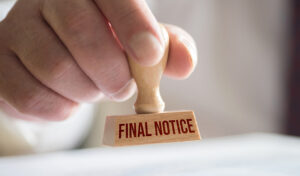You must have a basic understanding of HOA financial statements to run a homeowners association. After all, keeping your HOA’s finances transparent and accurate is crucial. The homeowners in your community want to know where their money is going. Understanding HOA financial documents will also help you decide how to use your association’s funds wisely.
Basic HOA Financial Statements You Must Have
There are several HOA financial reports the board must know about. These HOA financial statements provide you with different perspectives to understand your financial health. Moreover, they help you plan how much the HOA fees will be and what to present in your HOA budget meeting.
1. Balance Sheet
The HOA balance sheet is the financial statement that provides you with an overview of your financial information. It showcases your financial health and net worth through your equities, liabilities, and assets. In essence, it’s the one you should look at if you need a quick rundown of your financial status.
Every HOA balance sheet template follows the format given in the Generally Accepted Accounting Principles (GAAP) and follows this formula:
Assets = Liabilities + Equity
The premise behind this formula is simple. It indicates that all of your HOA’s assets have come from somewhere, whether through investments or loans. The total of your assets should equal your liabilities and equity combined. If they’re not in balance, the bookkeeper must recheck the record to find the source of the error.
Assets
Your HOA’s assets have two categories: current and noncurrent. Current assets are the ones that can easily convert into cash during the year. These usually include your cash or cash equivalents. Meanwhile, noncurrent assets are those that take longer to convert. Examples include fixed assets like office furniture.
Liabilities
An HOA’s liabilities are the debts or obligations your HOA needs to pay off to someone else. It usually includes your association’s expenses. Liabilities also have two categories: current and long-term liabilities. You need to pay your current liabilities immediately or soon (within one year). On the other hand, long-term liabilities are obligations you can pay much later.
Equity
An HOA’s equity is the money you return to shareholders or owners after liquidating your assets and paying your liabilities. You can transpose the previous formula to get your equity as follows:
Equity = Assets – Liabilities
The bookkeeper in your HOA must classify each item under the right category. One mistake can throw off balance or make your HOA appear financially unhealthy. Hence, accurate reporting isn’t just about keeping things balanced and ensuring every transaction is properly categorized.
2. Income Statement
 There are over 355,000 HOAs in the U.S.; while HOAs are non-profit organizations, they all have Income Statements. This is because the HOA Income Statement is crucial for showcasing what your HOA owns and owes. It records both cash and non-cash gains and losses.
There are over 355,000 HOAs in the U.S.; while HOAs are non-profit organizations, they all have Income Statements. This is because the HOA Income Statement is crucial for showcasing what your HOA owns and owes. It records both cash and non-cash gains and losses.
The Income Statement is important to get right because it shows how profitable your HOA is. It can tell whether you have the extra funds for another event or are operating at a loss. Your HOA can then determine whether they must raise dues, reduce the goods they buy, or conduct more events.
There are two components in an Income Statement: operating and non-operating. It shows your total sales taken from various activities like ticket sales for community events or gate fees for deliveries. The Income Statement also records all your expenses, like the cost of maintenance or repair services. It also records bank fees, employee salaries, cost of goods, utilities, and accruals.
3. Cash Flow Statement
The Cash Flow Statement is one of the more unique HOA accounting reports. It provides you with a different perspective and specifically showcases how cash flows in and out of your association. Moreover, it tells you the cash’s source and destination.
That said, it’s important not to confuse the Cash Flow Statement with the Income Statement. They are different because the Cash Flow Statement only deals with cash transactions. Meanwhile, the Income Statement can include inflows and outflows that are non-cash. The Cash Flow Statement generally records three sources and destinations: financing, investments, and operations.
Why is the Cash Flow Statement important? Firstly, it’s the best way to showcase how liquid and solvent your HOA is. It tells you how your association can fulfill immediate expenses like employee salaries. Moreover, the Cash Flow Statement lets you know if you can raise the cash necessary for cash expenditures. This HOA financial report also tells you whether or not you’ll need external financing measures.
4. General Ledger
An HOA’s General Ledger acts like your master record. It keeps all of your transactions and records all your financial affairs. The General Ledger even records simple transactions like transferring money from the bank to cash on hand. It’s also what other financial statements use to compare their records and check whether they missed something.
The General Ledger is part of your HOA financial records but is not considered a financial statement. However, it’s still important because it sorts all your transactions by date and account number. The General Ledger also lets you track all your transactions without checking every receipt.
5. Cash Disbursements Ledger
The Cash Disbursements Ledger, or Check Register, is a report that tells you how much your HOA is spending. It gives you an overview of all your expenditures. But, it differs from a Cash Flow Statement because it accounts for cash and check transactions. The report contains your transaction’s date, amount, payee, description, and invoice number. It also contains your check date and check number, if applicable.
6. Accounts Payable Report
The Accounts Payable Report is a master record showcasing all of your unpaid debts and HOA loans. It contains all the details, including how much you owe and the creditor. This is helpful because your HOA needs to know which vendors or service companies it still needs to pay. It also helps you maintain a healthy relationship with your contractors and ensure you don’t miss payments.
7. Account Delinquency Report
 An HOA collects association dues from its homeowners every month. But, sometimes, some members don’t pay on time. They may forget to settle their accounts or refuse the obligation completely. As such, HOAs must keep track of these bad accounts through an Account Delinquency Report.
An HOA collects association dues from its homeowners every month. But, sometimes, some members don’t pay on time. They may forget to settle their accounts or refuse the obligation completely. As such, HOAs must keep track of these bad accounts through an Account Delinquency Report.
The Account Delinquency Report contains two key elements: the resident’s name and how much they need to settle. Moreover, the amount they owe has further categorizations based on time. These include Over 90 Days, Over 60 Days, Over 30 Days, and Current. These classifications tell you how long the homeowner has been behind. This makes collection and deciding on further action easier.
Keep Your HOA Financial Statements Accurate
HOA financial statements can be hard to comprehend, but you need them to understand your association’s financial health. Once you do, you can confidently make plans and adjust the budget for the next year.
Making financial statements without a business or accounting background can be difficult. That’s why many HOAs ask management companies for help. Call us today at 855-238-8488 or ccontact us online to ask for a proposal!
RELATED ARTICLES:
- HOA Board Meeting Minutes: What Is It, Why It’s Important, And When Should It Be Shared
- HOA Dispute Resolution: How The Board Should Handle Disputes
- Getting Approval For Home Renovations In HOA Communities







